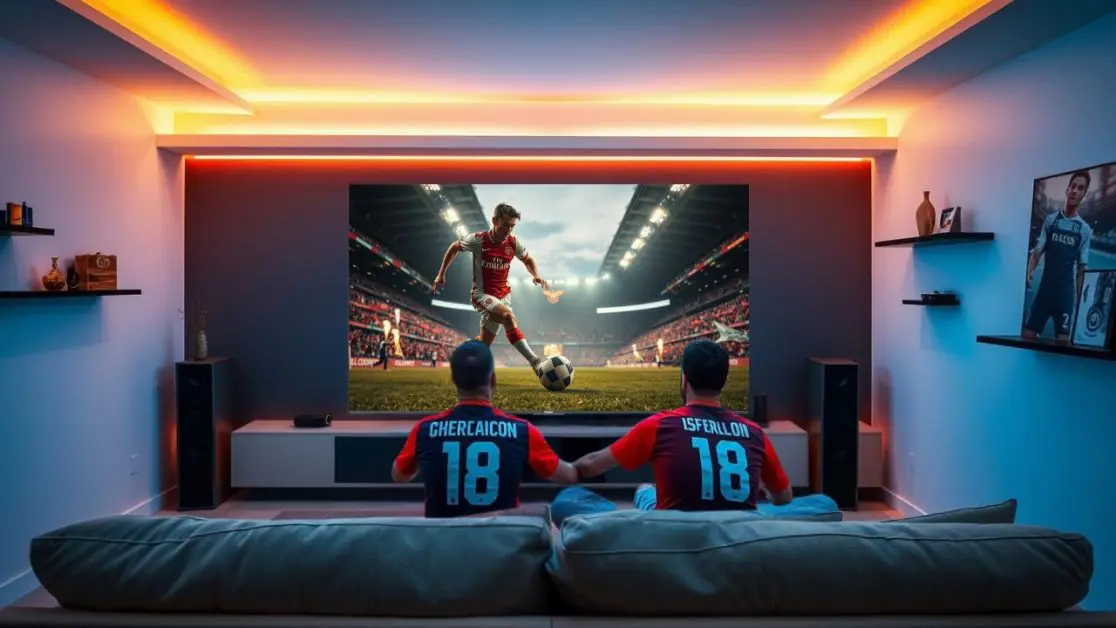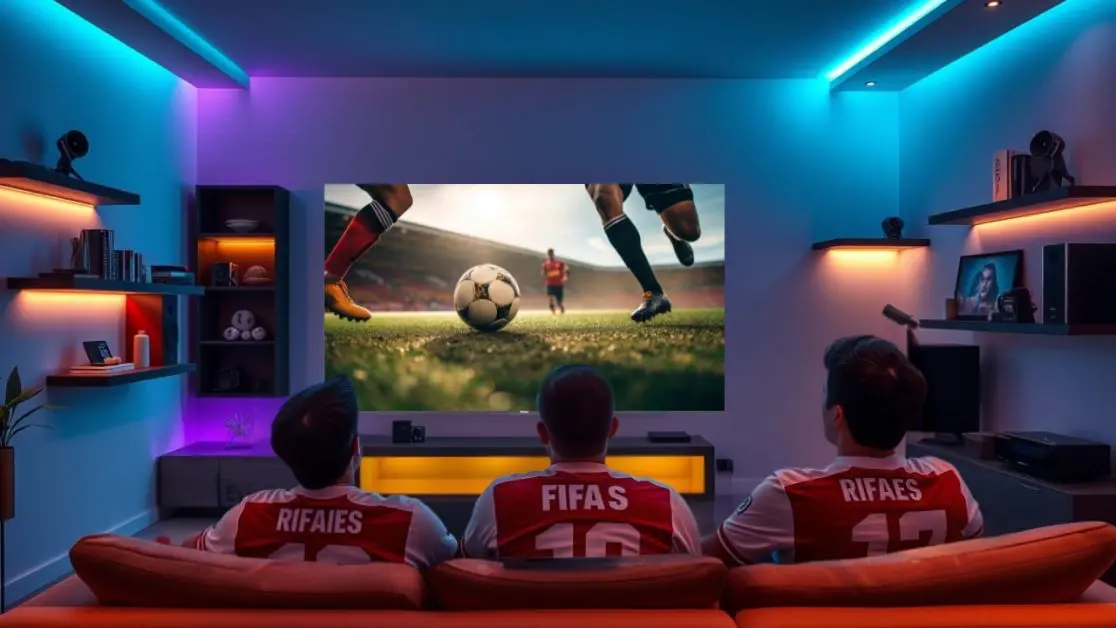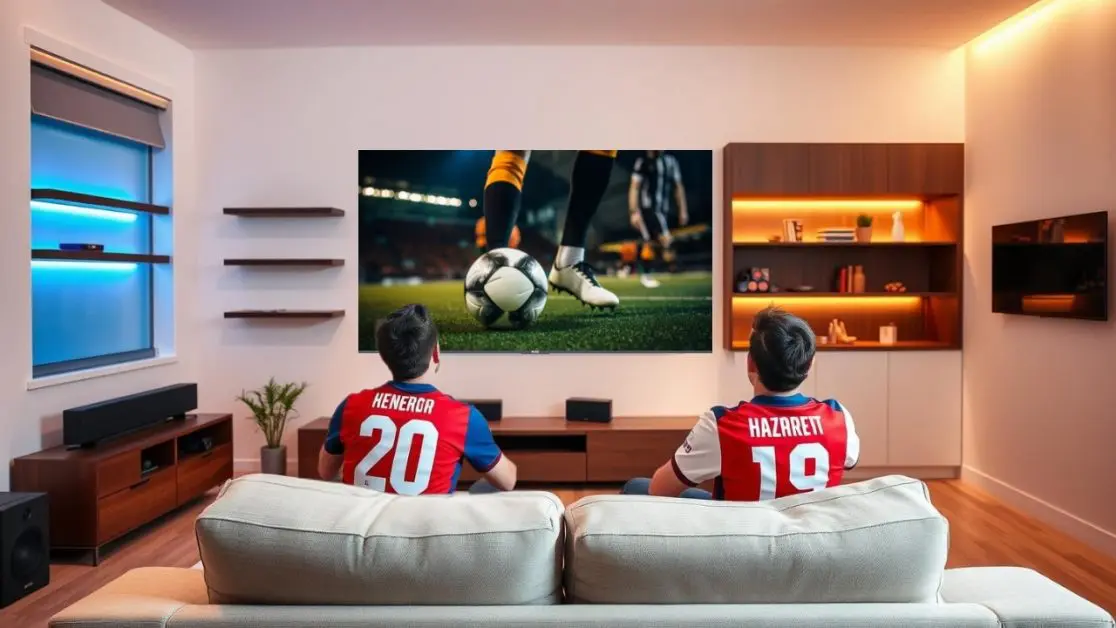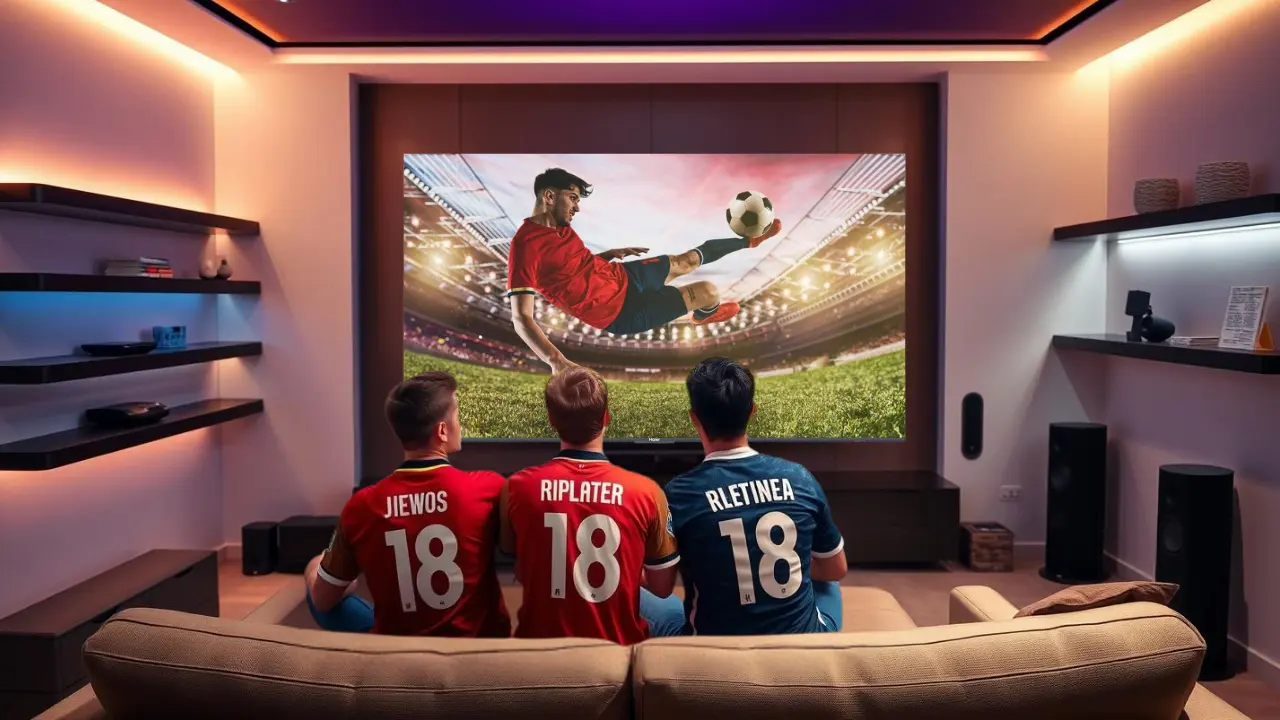Why motion clarity matters more than megapixels this season
Your eyes don’t lie. But your TV might.
You’re up early. FIFA Club World Cup 2025 is on.
It’s Inter Miami vs Al Ahly. Messi’s sprinting across midfield. You’re ready to witness the pass that could change the match.
But right when he makes the move, your TV hiccups. The ball blurs. The frame stutters. You’re not watching the match. You’re watching your screen catch up.
That’s not just annoying. It’s disorienting.
And once you notice it, you can’t unsee it.
Football doesn’t forgive weak screens
Let’s be honest.
Most TVs in Indian homes were not bought with FIFA in mind.
They were bought for size, brand, or discounts. And they work fine, for soap operas, movies, IPL reruns.
But football? Football is ruthless.
Here’s why it breaks ordinary displays:
- Constant motion: The ball doesn’t rest. Neither do the players.
- Camera pans: Wide-angle tracking shots demand high frame refresh.
- Sudden pace shifts: From slow midfield buildup to lightning-fast counterattacks.
Every one of those things exposes flaws in motion handling.
The result?
- Blurry feet during dribbles
- Ghost trails behind the ball
- Delayed reaction during replays
- You miss the magic of the game
FIFA 2025 is a test, for your TV

This isn’t just any tournament.
It’s the first-ever 32-team Club World Cup.
That means more matches. More late nights. More excuses to call friends over.
But more importantly, it means more pressure on your screen.
Because in football, a split-second matters.
You either see it happen live, or you don’t.
Not all 4K is equal
Let’s bust a myth.
You don’t need just a “4K TV.” You need a TV that can keep up.
Here’s the truth:
Resolution tells you how many pixels your screen has.
Refresh rate tells you how fast those pixels can respond.
If your TV has a 60Hz refresh rate, it can only update 60 times a second. That might sound fast, until you watch fast-paced football.
Now compare that to a 144Hz screen like the one on QLED 98S9QT.
It refreshes more than twice as fast.
The result?
- Motion stays crisp
- The ball doesn’t blur mid-flight
- Player footwork looks as real as the turf itself
Still using a 60Hz panel? Here’s what you’re missing

Let’s break it down.
Most budget TVs today come with a basic 60Hz panel. That’s fine for watching Netflix dramas or cooking shows. But during FIFA, your screen needs to do more than show, it needs to perform.
Here’s what’s missing in slower TVs:
- MEMC (Motion Estimation, Motion Compensation): Creates extra frames to smooth out movement
- VRR (Variable Refresh Rate): Syncs with the frame rate of the game to avoid judder
- ALLM (Auto Low Latency Mode): Reduces delay during live action and even more when you play FIFA on your console after
These features aren’t luxury anymore.
They’re essentials for today’s fast-paced content.
Game Mode isn’t just for gaming
There’s something interesting happening in living rooms.
Gamers have long cared about lag, refresh rate, and clarity.
Now, football fans are joining the club.
Modern TVs like the QLED 98S9QT come with Game Mode that also benefits sports fans:
- Real-time visuals with minimal lag
- No motion blur during close-up shots
- Adaptive performance when you switch to your PS5 after the match
It’s not just a “game” mode anymore. It’s a reaction time mode.
The experience of watching FIFA deserves more than just size
You might think: “I already have a 65-inch TV. That’s enough, right?”
Well, let’s ask this instead: Does it keep up when the game gets fast?
Because here’s the thing:
- A bigger screen makes motion issues more visible.
- Blurs are harder to ignore when they’re life-sized.
- A slow panel on a big screen doesn’t feel premium, it feels broken.
A TV like the Haier 98S9QT, on the other hand, is built for scale and speed.
- 144Hz refresh rate
- 4K QLED resolution
- Dolby Vision IQ to adapt brightness based on room lighting
- Dolby Atmos audio that mirrors the stadium roar
- MEMC to keep the action fluid even during fast transitions
And it’s not just about watching. It’s about feeling like you’re there.
Tier 1 vs Tier 2: Why this matters across Indian cities

Whether you’re in Bangalore or Bhopal, Chennai or Chandigarh, football fandom is growing.
In Tier 1 cities, people are investing in home entertainment because match nights are becoming social events. You invite friends. Make snacks. Dim the lights.
In Tier 2 cities, families are looking for one TV that does it all:
Sports. Movies. Gaming. YouTube. OTT binge.
But across both, there’s a shared expectation:
If you’ve spent money on a big screen, it should feel like a big league.
And that only happens when your TV can keep pace with the ball.
The stadium is 8,000 miles away. Your TV shouldn’t be.
You’re not flying to the US to watch the Club World Cup. But your experience shouldn’t feel distant.
What closes the gap?
- Life-sized screen
- Smooth 144Hz motion
- Sound that echoes like you’re in the stands
- Zero lag between pass and play
This isn’t about specs.
It’s about presence.
You’re not watching from the sidelines. You’re inside the game.
Clarity > Resolution

In 2025, size and resolution aren’t enough.
- A 4K image that lags is still frustrating.
- A giant TV that blurs motion feels old.
- A screen that can’t adapt to fast-paced action makes even Messi look slow.
You don’t need just a 98-inch screen.
You need a 98-inch experience.
That’s what motion clarity delivers.
Football moves fast. Your TV should too.
Every pass, every sprint, every save, it happens in milliseconds.
And those milliseconds are the difference between:
- “Did you see that?!”
- And “What just happened?”
If your TV can’t match the rhythm of the game, it’s not doing justice to what you love.
Upgrade to the QLED 98S9QT. Not for show. For speed.
Because FIFA 2025 is not a test of teams alone.
It’s a test of your screen.
With 144Hz refresh rate, Dolby Vision IQ, immersive Dolby Atmos, and Game Mode features tailored for real-time performance, the QLED 98S9QT is not just big. It’s built for football.
Explore it on shop.haierindia.com or visit your nearest showroom.
When the game moves fast, your screen shouldn’t fall behind.
Let your TV match the footwork.

